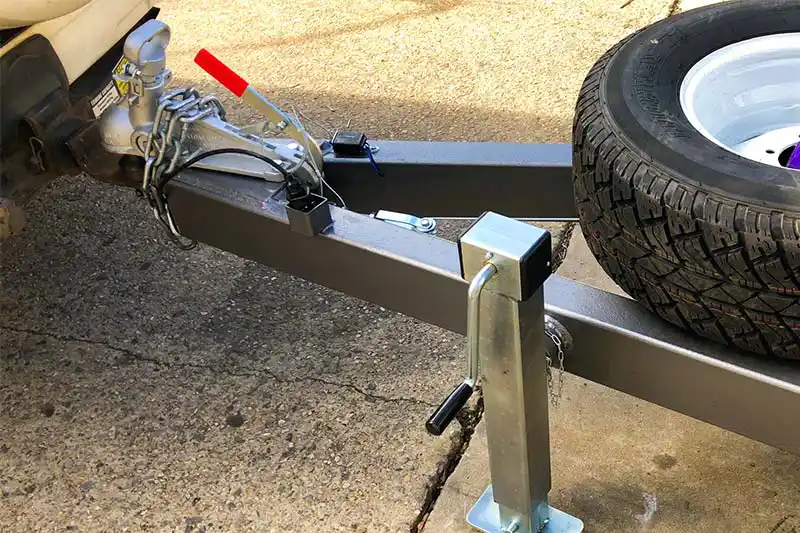How to Hook Up Your Trailer

It makes sense that if you want to tow any sort of trailer in Adelaide, whether it’s a 6x4 trailer, a car trailer, or a 8x5 heavy duty trailer, then the first thing you need to do is ensure that it is properly connected and hooked up to the towing vehicle. This will not only prevent damage to your vehicle and trailer, but will also help to keep other road users safe as well.
Get into the right position before you start
It is always easier to hook up your trailer to the towing vehicle when the two are aligned in a straight line together (it can be done when the trailer is at an angle to your car, but this is more difficult).
If you’re loading a trailer before it’s hitched up, remember that it’s likely to be more difficult to manoeuvre into place by hand with a heavy load, so it is helpful to think about accessibility for your towing vehicle before you begin. (If possible, it may make more sense to hitch up your trailer before you load it.)
Once your trailer is in position, you should then back up your vehicle, in as straight a line as possible, until it’s about 30 cm from the tow coupling, to ensure you have the proper alignment.
The tow coupler on the trailer should then be raised until it’s around 5 to 10 cm higher than the tow ball. This is best done either by rotating the handle on the jockey wheel, which will raise the drawbar and coupling, or lifting by hand if it’s a smaller 6x4 single axle trailer, or it is not yet fully loaded.
The towing vehicle should then be backed up carefully so that the tow coupling is directly above the tow ball on your vehicle. A second person to guide you as you do this is very helpful, but if this isn’t possible, you should proceed with caution and do this slowly and carefully, stopping and getting out to check the distance and alignment, if necessary.
Hooking up
Once you’re in position, with the towing coupler above the tow ball, ensure that the hitch locking mechanism on the trailer is open. You should then lower the towing coupler down onto the tow ball (either using the jockey wheel or manually), and you will know it is securely in place when it the coupling sinks down fully onto the tow ball.
You can generally be sure that you have your vehicle and trailer hitched up properly if you are then able to close the hitch locking mechanism fully. To double check, try lifting the trailer off — if this can’t be done, you will know everything is properly in place.
The next step is to connect the safety chains — these are compulsory, and you also should make sure they are ADR approved (as are all the chains we use on our Adelaide-made trailers). These should be crossed over for extra security, and firmly affixed.
You should then connect the trailer plug, and ensure that the rear lights, number plate light, indicators and hazard lights are working in sync with the corresponding lights on the towing vehicle. This is very important, so make sure you take the time to check these thoroughly.
A final check
Before you hit the road, you should carry out a final check to make sure everything is secure and roadworthy. Any time you stop for a break or to re-fuel, particularly on a long journey, it is worth taking the time to carry out these steps again.
- Ensure that the hitch lock is in firmly in place on the tow ball and the mechanism is in the closed position.
- Check that the jockey wheel is fully retracted (or removed) and firmly locked in place.
- The trailer plug is connected to the towing vehicle and is secure.
- Ensure that all lights are working properly.
Need to Know More?
At Basic Trailers in Adelaide, we manufacture a range of trailers designed for both commercial and personal use, including galvanised trailers, heavy duty tandem trailers, trailer cages and car trailers. Get in touch with us, or call Sam on 1300 770 770 if you need to know more about the tow couplings we use on our trailers for sale in SA, or which of our models would be the right sort of trailer for your needs.
